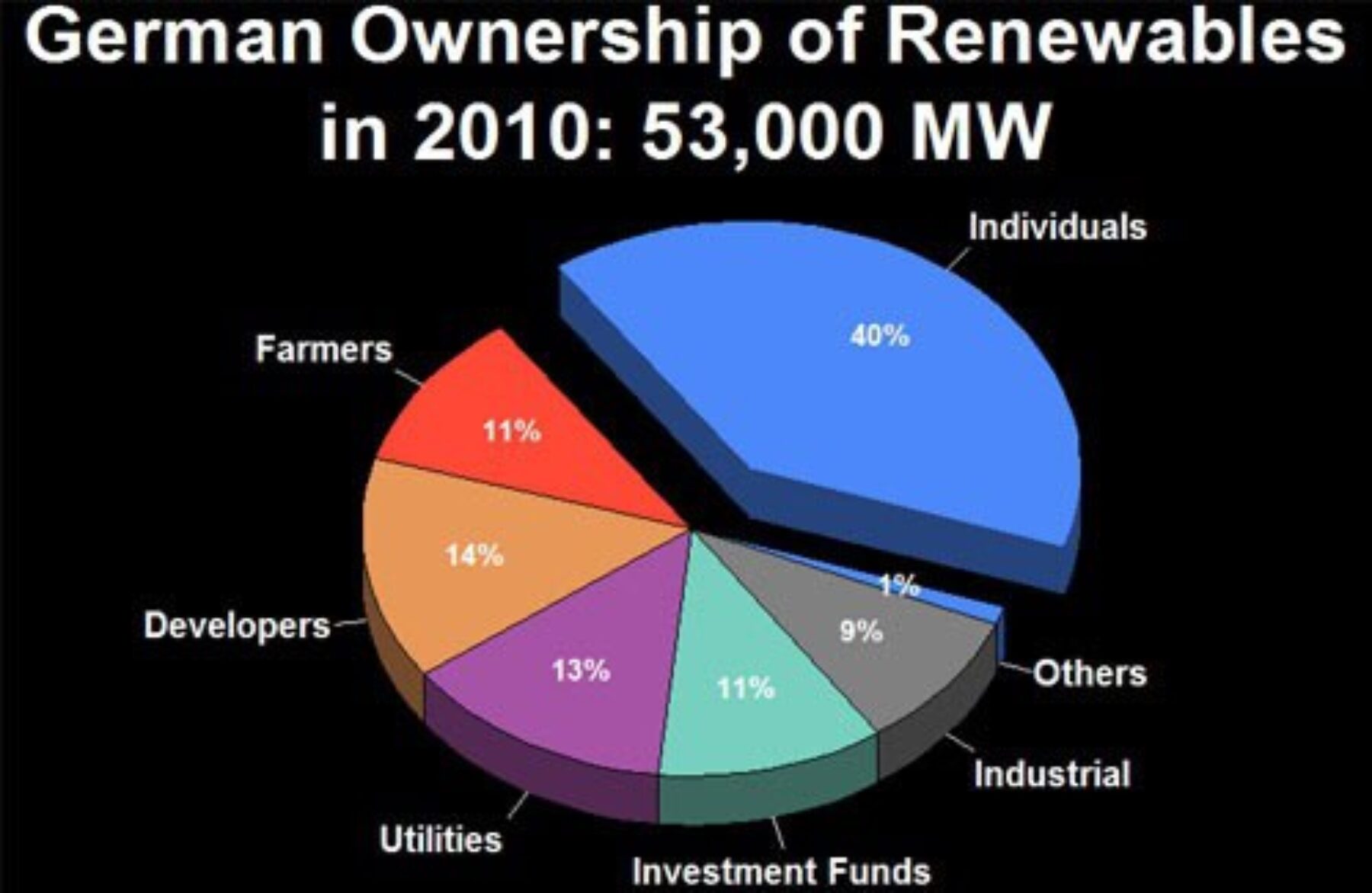Germany, where more than half of the country’s renewable energy is now generated by citizens, will host a conference on community power in July 2012
51% of renewable energy generation in Germany is now owned by farmers or individual citizens, according to figures published by renewable energy analyst Paul Gipe.
In 2010, more than half of the 53,000 MW of renewable energy capacity in Germany was owned by citizens, representing approximately £65bn of private investment.
Germany will be hosting an international conference on community power on 3-5 July 2012 in Bonn, in the former home of Germany’s parliament.
The 11th World Wind Energy Conference (WWEC2012), entitled Community Power – Citizens’ Power, will be held in the historic chamber where the world’s first law was enacted to enable citizens to feed electricity into the grid.
The conference, which has government backing, is being organized by the World Wind Energy Association (WWEA) and the German Wind Turbine Owners Association (BWE). The latter has become the world’s largest wind energy association, representing thousands of individual owners of wind turbines in Germany.
Stefan Gsänger, WWEA managing director said: “If we want to reach 100% renewable energy supply, we have to ensure that local communities benefit from renewable energy development and support projects in their vicinity. Community and citizen ownership models have a proven track record in achieving this objective.”
Renewable electricity generation in Germany represents 20% of the country’s supply. In the UK meanwhile, statistics from the Department of Energy and Climate Change show that renewable sources generated 9% of the UK’s electricity in the third quarter of 2011, from July to September.
In other news, industry body RenewableUK has announced that wind power supplied a record share of 12.2% of the UK’s electricity needs on 28th December due to stormy weather, with wind power meeting an average of 5.3% of demand for electricity for December and early January.

